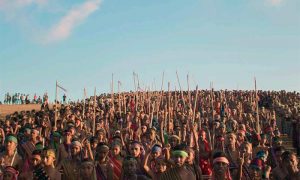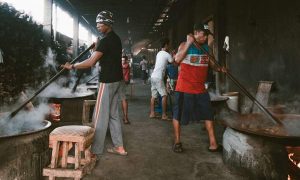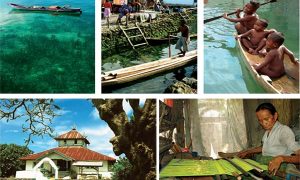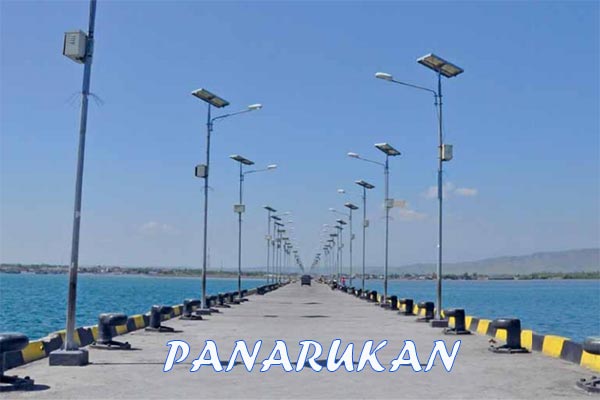
Port of Panarukan is probably much less famous than other ports, such as Belawan, Tanjung Priok, Tanjung Emas, and Tanjung Perak. Panarukan is a district in the Situbondo regency.
If you go through the north coast route from Surabaya, you will pass through a majestic building of steam-powered electric generator of Paiton before entering Situbondo regency, Besuki region, which has a white sand beach along the road.
In the 18th to the 19th century, during the Dutch East Indies’ colonization, Panarukan used to be a famous town to which traders travel because it has a strategic port located at the northern coast of East Java near a crowded trade route. Kilensari port used to be the economic pillar of Dutch East Indies and famous as the business route in Asia and Europe.
Panarukan used to be a regency until the end of the 20th century when Situbondo, which used to be Panarukan capital district, was promoted as the regency replacing Panarukan. Panarukan is now a district with 8 villages, Kilensari, Wringin Anom, Paowan, Sumber Kolak, Peleyan, Duwet, Alas malang, and Gelung.
Daendels Road, Anyer-Panarukan
Panarukan was famous at that time also because of the project of the Governor General of Dutch East Indies, Willem Daendels in mid- 1809. Daendels, the 36th Governor General, finalized his larget project at time, a 1000 km road which was known as “Anyer-Panarukan Road” or “Daendels Road” or “Post Road”.
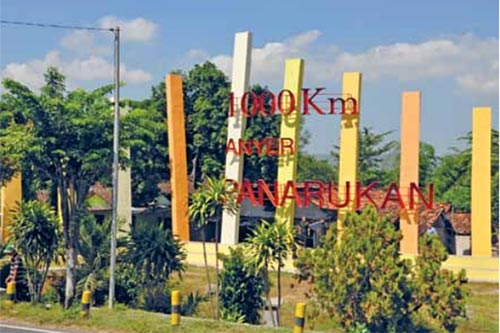
As the icon of the city, we can now find the 1000 km Anyer-Panarukan Monument to commemorate the building of the road that stretches from the westernmost of Java in Banten to the easternmost in Panarukan. While the building of the road was infamous for being a sweatshop that had many casualties, the road has proven to very beneficial for the flow of traffic and economic development, and it is also constantly crowded
Infrastructure was not the only thing that made Panarukan famous. Its economy was developing rapidly at the end of the 19th century, when in 1886 it was turned into the ‘gold reserve’ for the Dutch East Indies
The establishment of Panarukan port was initiated by a Dutch trader, George Bernie, the owner of NV. LMOD (Landbouw Matschappij Oud Djember), who was also the owner of the largest plantation in Jember. Panarukan grew fast because it exported plantation products, such as tobacco, coffee, tea, and cane.
To complement the port, a train station was built by the Netherlands in the 1890s. The route of the train was Jember-Bondowoso-Panarukan which spanned more than 75 km. It used to serve a tram heading straight to the port to transport the plantation products to be transferred to the ship or stored in the warehouse. While no longer functional and worn out, the building remains.
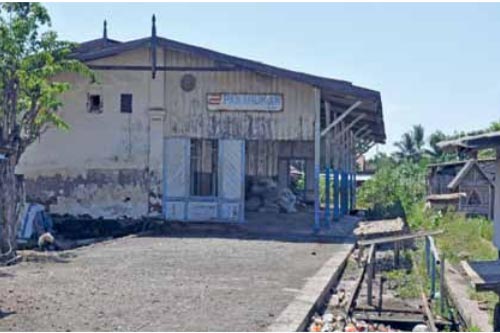
The building is Dutch-style and consists of the office of head of station, general warehouse, and waiting room for passengers. The station used to serve two railways, which means that it used to be a crowded and busy station when operational. The railways were important to transport tobacco from jember and Bondowoso. Panarukan used to also have 12 sugar factories. Only a few remain.
At the port of Panarukan, you can find old buildings used to be utilized as the warehouse to store plantation commodities. They are mostly worn out, some are even barely standing. The port began to decline once the functions of the ports began to be switched to Probolinggo and Banyuwangi. It is now only used by fishermen and traditional boats.
There is an interesting development concerning the port of Panarukan situation recently. Three years ago, Sea Transport Office built a new dock spanning 3 km seaward. The local government, however, is unable to attract any investor to utilize the new dock. The local government is said to be working hard to reinvigorate the port, including by planning to restore the long abandoned railway to the port from the station.
Port Of Panarukan – Temporaktif




